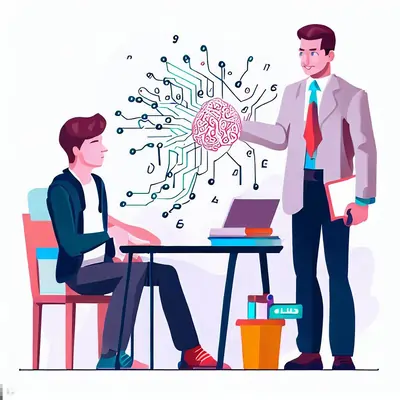8 Most Important Kinds of Deep Learning Homework in Python Used in Teaching at Universities

A well-known subset of artificial intelligence called deep learning has significantly advanced many different industries and fields of study. Universities have embraced this game-changing technology by incorporating it into their curricula, giving students access to real-world experience and knowledge. Instructors write mydeep learning homework in Python, a popular programming language renowned for its simplicity and extensive libraries, to reinforce the theoretical concepts taught in the class.
We will delve into deep learning in this blog post and examine the eight key categories of Python-based homework that are frequently assigned in academic settings. These tasks have been carefully created to improve students' comprehension of fundamental deep-learning concepts, algorithms, and applications. By completing this homework, students gain insightful knowledge and useful abilities in the application of deep learning models, data preprocessing, and outcome analysis. Students can see firsthand the potential of deep learning in solving complex problems as a result of the journey into this homework, which opens up a world of fascinating possibilities.
Students gain the skills necessary to succeed in a variety of fields, including image classification, natural language processing, object detection, and gaming, through this carefully crafted homework. Students are well-equipped to contribute to the constantly developing field of artificial intelligence and shape its potential social impacts by immersing themselves in the practical aspects of deep learning through Python.
Implementing Basic Neural Networks
Implementing fundamental neural networks is one of the initial steps in exploring deep learning. Students who want to engage in deep learning can begin by exploring these networks. Implementing feedforward neural networks, backpropagation algorithms, and activation functions is a common task for homework in this field. With the help of well-known Python libraries like TensorFlow or PyTorch, students can gain practical experience in coding the fundamental components of deep learning models through participation in this homework. This practical approach makes it easier to comprehend neural networks' inner workings and their capacity to be trained for a variety of tasks. Students build a strong foundation for their future deep learning endeavors by gaining valuable insights into the functionality and capabilities of these models through the process of implementing these fundamental neural networks.

Convolutional Neural Networks for Image Classification
Beyond simple neural networks, one of the most common uses for deep learning is image classification. Teachers frequently ask their students to use convolutional neural networks (CNNs) to classify images as part of their homework. Students can learn important information about the field of deep learning-based image analysis through this process. In order to extract important features from the images, students learn how to preprocess image data by using a variety of convolutional layers, pooling operations, and activation functions. Students also investigate cutting-edge methods for improving the performance of their CNN models, including transfer learning, utilizing pre-trained models, and data augmentation. Students gain hands-on experience designing CNN architectures specifically suited for image classification tasks by working on this homework, which deepens their understanding of how deep learning can be used to process and categorize visual data.
Recurrent Neural Networks for Natural Language Processing
Natural language processing (NLP) has undergone a revolution thanks to deep learning, and recurrent neural networks (RNNs) are now crucial for tackling NLP tasks. Students are introduced to the use of RNNs for tasks like sentiment analysis, language translation, and text generation through homework in this subject. Students gain practical experience handling sequential inputs, preprocessing textual data, and using specialized RNN variants like LSTM or GRU to accurately model language dependencies throughout this homework. The tasks highlight how crucial it is to use strategies like tokenization, word embedding, and handling special characters. Students gain a thorough understanding of how RNNs can process and generate natural language as well as insights into issues like vanishing gradients and training optimization by completing these tasks. Students who possess these abilities are better able to advance NLP and use deep learning for language-related applications.
Generative Adversarial Networks for Image Generation
Homework gives students the chance to learn more about the capabilities of Generative Adversarial Networks (GANs), which have grown to be a popular tool for creating images. Implementing GANs to create new images from provided datasets may be part of this homework. The adversarial training procedure, loss functions, and architectural considerations for the generator and discriminator networks are all put into practise for the students. In order to create particular image types or improve visual quality, they also investigate more sophisticated techniques like conditional GANs and StyleGANs. These tasks help students gain a deeper comprehension of how GANs interact, how hyperparameter tuning works, and how challenging training is. Students develop important skills to advance this field and unleash the creative potential of deep learning in image synthesis by mastering image generation using GANs.
Reinforcement Learning for Autonomous Agents
A fascinating area of deep learning called reinforcement learning focuses on teaching agents how to make sequential decisions in various contexts. In this area, homework frequently involves using reinforcement learning techniques like Q-learning or Deep Q-Networks (DQNs) to train agents for activities like playing video games or operating autonomous vehicles. Students gain hands-on experience using Python frameworks like OpenAI Gym to optimise agent policies, manage state and action spaces, and design reward structures throughout this homework. Students gain a deeper understanding of how reinforcement learning allows agents to learn and adapt through interaction with their environment by completing these tasks. The advancements in areas like robotics, gaming, and autonomous systems will be made possible by the skills this homework gives students in creating autonomous agents.
Object Detection and Localization with Deep Learning
In computer vision, object localization, and detection are crucial, and deep learning models have shown to be helpful in these tasks. Implementing object detection using methods like Single Shot MultiBox Detector (SSD) or You Only Look Once (YOLO) is a common task for homework in this field. Students gain hands-on experience with image data preprocessing, object annotation, bounding box regression, and non-maximum suppression. These tasks give students a practical understanding of how deep learning can be used to find and identify objects in images and videos. By completing these tasks, students gain crucial abilities for applying deep learning methods to actual computer vision issues as well as an understanding of the difficulties and approaches related to object localization and detection. In the end, this homework gives students the tools they need to advance computer vision research and use deep learning for effective object detection applications.
Natural Language Processing with Transformers
Natural language processing has been transformed by transformers, and homework in this area lets students test their abilities. Implementing transformer-based models for jobs like text classification, named entity recognition, or question-answering may be a part of this homework. Students gain hands-on knowledge of positional encoding, attention mechanisms, and the pretraining-finetuning pipeline that is frequently used in transformer-based models. Students gain a thorough understanding of how transformers have changed the field of natural language processing by completing this homework. They learn the abilities required to implement and perfect transformer models, allowing them to successfully complete a variety of NLP tasks. Students gain important insights into the most recent developments in NLP thanks to the rising popularity of transformer-based architectures like BERT and are better prepared to contribute to further advancements and innovation in this quickly developing field.
Deep Reinforcement Learning for Game Playing
Agents can learn complex behaviors from sensory input thanks to deep reinforcement learning, which combines the best aspects of reinforcement learning and deep learning. Students in this field are frequently required to use deep reinforcement learning algorithms, such as Proximal Policy Optimisation (PPO) or Deep Q-Networks (DQNs), in their homework to train gaming agents. Students learn about state representation, reward shaping, exploration-exploitation trade-offs, and the particular difficulties associated with training deep reinforcement learning models throughout this homework. By completing this homework, students gain hands-on experience in creating agents that can learn from their interactions with gaming environments and enhance their performance. These tasks help students gain a deeper comprehension of the fundamental ideas underlying deep reinforcement learning, giving them the necessary tools to handle difficult decision-making situations and advance algorithms for artificial intelligence and video game play.
Conclusion
Universities are actively incorporating deep learning into their teaching curricula because it has become an essential component of contemporary education. The eight different types of deep learning homework that are covered in this blog post give students practical experience in using Python to implement deep learning models. Students gain a deeper comprehension of the underlying algorithms, preprocessing strategies, and practical difficulties related to real-world deep learning applications by completing this homework.
These homework tasks give students the tools they need to solve challenging issues in a variety of fields, including image classification, natural language processing, object detection, and gaming. Students gain the knowledge and abilities needed to contribute to the developing field of deep learning and have a positive influence on a variety of industries by successfully completing this homework. An exciting and rewarding endeavor, deep learning homework in Python paves the way for future innovations and advancements in this quickly developing field.